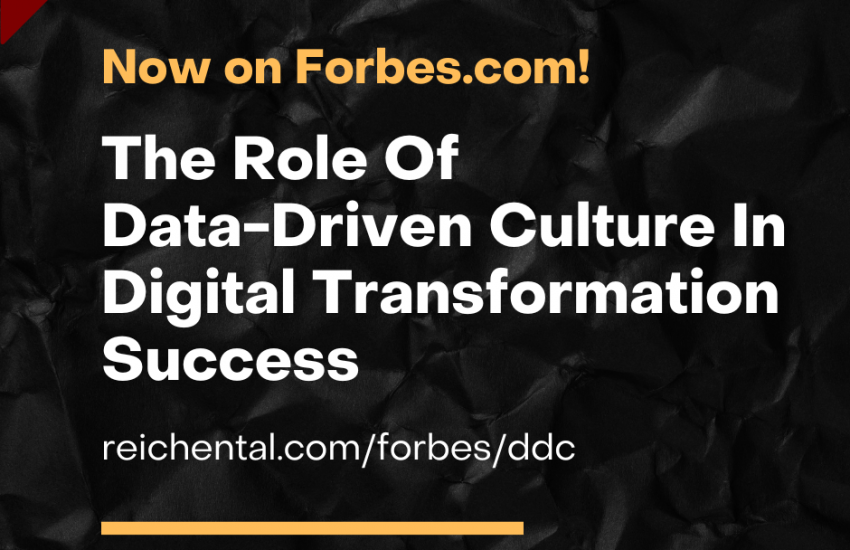Why do so many enterprises still have difficulty implementing new technologies?
IT innovation abounds! We live in a spectacular time. Change appears to be happening rapidly. Market barriers for new entrants have come down. Got an idea? You can make it happen. But despite all the ebullience, much of our innovation still remains incremental. It’s more often evolutionary rather than revolutionary. In fact, that’s just the way it’s always been. New knowledge is created at its natural pace and new insights build upon it. Occasionally there is a ground shift and a new branch of knowledge emerges that itself spawns new products and services. In the IT business, we see this every few years.
Sure, we should give credit where it’s due. The IT industry is at the leading edge of innovation when compared with other industries.
I write here, not about the IT innovation that we see happening in businesses every day and not about the important incremental innovation that helps businesses move forward. I’m referring to breakthrough innovation — the kind of innovation that reinvents everyday things. Of course it happens eventually, but it takes a long time.
The reality is that organizations are only capable and willing to adopt technology at their pace. For many of us — suppliers, managers, and implementers of technology — it can be valuable to understand why this might be the case. No matter how much you fight it, the rate of technology adoption at enterprises is a throttle on the velocity of new innovation that can be introduced by technology providers. In my view, were this not the case, I imagine we may already have had pervasive teleportation and invisibility cloaks at our disposal.
Over my career working in and observing multiple enterprises, I’ve noted some consistent trends that provide rationale for their speed of technology adoption. It’s fair to say that there is a spread, but the majority in the bell curve move at a slow rate. Of course, there are always clear exceptions and we have to recognize those trailblazers, too. However, even the first movers are constrained by the majority. For example, with a social application: if your organization is the the only one using it, its value may be considerably weakened by the absence of the network effect.
Below I briefly discuss five reasons why enterprises continue to have a slow adoption rate for innovative technology. I’ll admit there are no surprises in this list, and frankly they are quite obvious to most of us. However, I think they are worth calling attention to again, particularly since we are in an impressive period of IT innovation. I’ve also added my own thoughts on how they can be addressed.
1. Cost
Decision-makers have many choices when investing scarce dollars on IT projects. In most organizations it’s a prioritization process that nobody enjoys. But it’s essential. Many great ideas fall by the wayside and never make the light of day in favor of more pressing enterprise needs. In this context, broad implementation of new technology — not research and development efforts — can have real problems securing funds.
Additionally, a new solution is often more expensive because of the change that needs to happen. It’s a bigger proposition than an upgrade, an enhancement, or the roll-out of a commodity-type ERP. Other costs, such as risk and the implementation unknowns, can provide a disincentive to decision-makers already jaded by too many failed IT projects.
ADVICE: Despite these constraints, many enlightened organizations still commit funds to high-risk, new technology projects, often by using dollars set aside specifically for these special projects. Decide if all projects should go through a standard IT governance or determine whether there should be an exception process that is triggered by technology that meets a certain high risk, high uncertainty criteria.
2. Complexity
Today, fewer and fewer solutions remain islands among the IT infrastructure. There are often so many inter-dependencies that even a small change has downstream impacts that must be considered. Introducing new technology into these environments is seldom a trivial exercise. It’s also a reason why so many decision-makers prefer single-vendor stacks. Sure, standards have improved the situation immensely, but we’re still a far distance from a time when customizations aren’t required or are at least reserved to the administrative layer.
ADVICE: In many ways, this limitation is aligned closely with cost. Complexity becomes less of an issue if you’re prepared to invest in the effort. If possible, put some funds exclusively for this exploratory work in your budget. Think about investing in a lab environment where ideas can be safely explored. Prototypes are a great way to win decision-makers over.
3. Resistance
While both cost and complexity are largely qualitative inputs, there are a number of human factors that greatly influence IT decisions.
There is an unfortunate twist to our period of hyper-innovation. While we embrace and support it — we love new toys — there’s a more sober component to new technology introduction that cannot be overlooked. It’s similar to that moment at a buffet when you know you’d like to try more, but you’re simply too full. Humans have a cap on the amount of new technology they are able to consume. Introduce too many new applications and they will be rejected.
This applies to system improvements too. As we’ve seen so publicly demonstrated as a consequence of Facebook changes, make too many far-reaching modifications and you risk a user rebellion. That’s a recipe for failure.
ADVICE: Every CIO needs to understand, for his or her organization, the pace at which new capabilities can be deployed. It’s probably a lot slower than we all think. Spend time to discuss different views with a variety of stakeholders. Analyze historical trends. Monitor usage as products get deployed. Over time it will become clear what the tipping point is. Your users will quickly let you know.
4. Legacy
We are wedded to the past. It has a lot to do with comfort and trust. We like the things we know more than things that are new and unknown. There’s a reason we go back to that tried and tested Excel formula when we know we have the same capability in the latest ERP system. There’s a reason we continue to use email for seeking answers when our organizations have spent millions on elaborate knowledge management systems. There’s clear value in legacy systems.
New technology often has to compete with these older solutions. For many of your users, you’ll need to pry them away from the old applications kicking and screaming. In some instances resistance will be so fierce, you’ll be forced to concede.
The net effect? Legacy systems present a limitation to the introduction of new technology. It may not happen at the time of deployment. It’s just as likely to happen at IT project governance when the decisions are being made on what projects to invest in. A debate may ensue that argues in favor of the legacy solution and that will kill the new technology before it ever sees the light of day.
ADVICE: Really focus on the business case. And reinforce it over and over. Make sure you have air-tight evidence for the return-on-investment (but recognize the need for a small number of leading-edge projects to move forward without all the evidence). Numbers talk, particularly dollars. Championing should come from many different leaders. Make a strong case, but ultimately respect the organizations choice.
5. Politics
Oh, the joy of organizational politics! It should come as no surprise that politics plays an important role in IT decision-making. Sometimes it can be an asset. For example, escalating up a hierarchy to leverage leadership perspective can often be a good way of getting tough decisions made. But it can too often be a liability. For example, individual or team self-interest can result in vendor selections that don’t reflect evidence gained in requirements gathering.
Reconciling organizational and individual interests is a messy business. And it’s highly complex. I imagine many of us can tell our own stories of how we observed decisions being made that had little basis in reasonable logic. We’d like to pretend it isn’t a factor, but all too often it is.
Negative organizational politics can hinder IT innovation. There is considerable value to the skill in those that can navigate within those constraints and turn them into a positive outcome.
ADVICE: Organizational politics shouldn’t be viewed as always being negative. It’s important to recognize the role it plays in the process of introducing new technology and then work to channel it into a positive force. Find out who your allies are and partner with them to help make a business case. Observe, listen and learn about your organizations dynamics. Make note of what works and what doesn’t and leverage that knowledge to navigate through the organizations politics. It’s not easy at all and an excellent skill for those that can master it.
These organizational constraints are presented not to suggest that new technology seldom gets introduced to the enterprise. Of course it does. The real effect of these limitations is that they slow the rate of introduction. I’m also suggesting that this slow rate when compounded at a macroeconomic level has a significant impact on the overall speed that new technology innovation gets integrated into each of our lives.
I recognize that this blog doesn’t explore the impact of new innovation in the consumer space on the enterprise (this phenomenon has been called consumerization). That’s certainly an important input. While many of the limitations I’ve discussed are still relevant, there’s a valuable research effort to be done to fully understand what the impact of consumerization will be on enterprise IT innovation over the medium to long term.
Just in case you were wondering, invisibility cloak research and prototyping is well underway. Just use your favorite search engine to look up the subject. You might be as surprised and impressed as I was.

